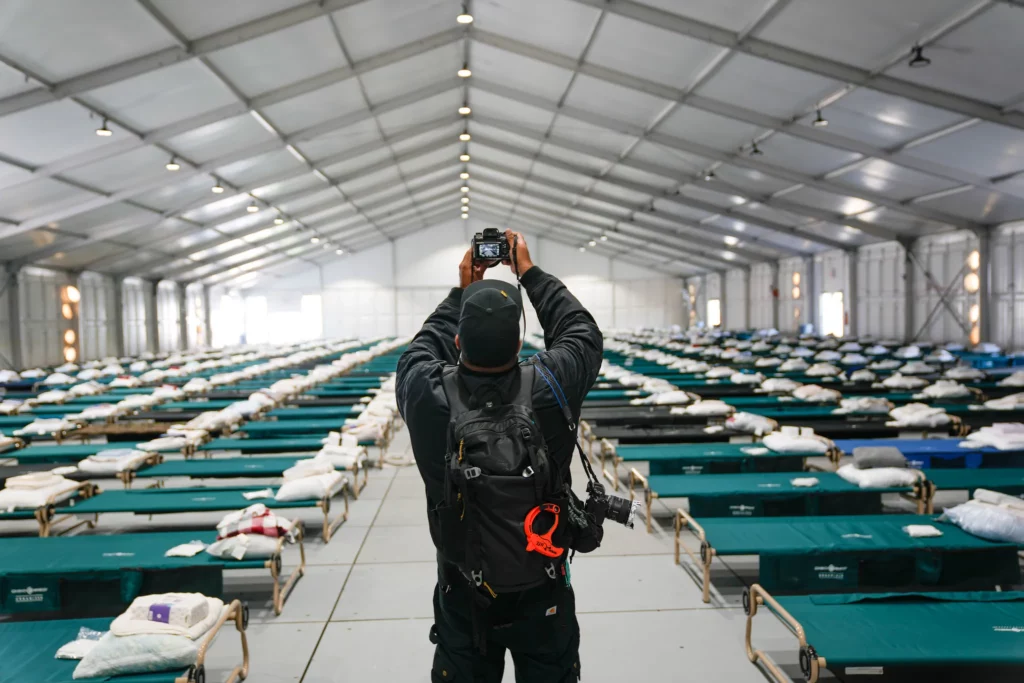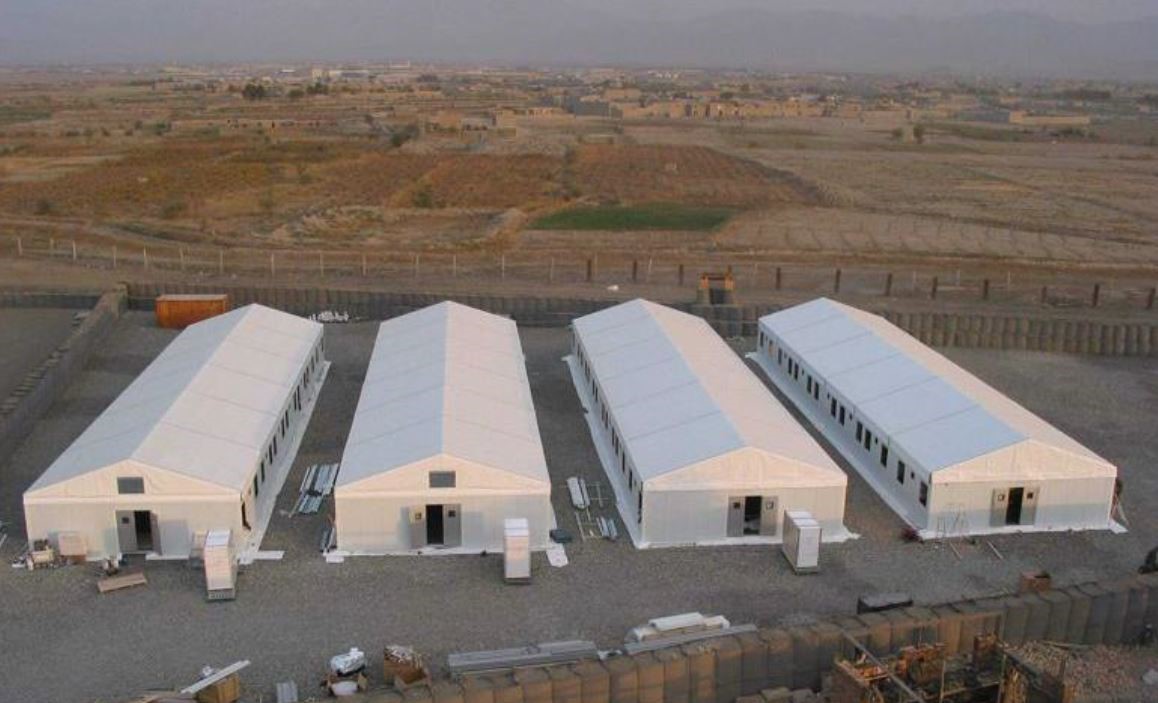1. Structural Design:
- Hard Wall Panels (Insulated):
- Rigid panel systems with thermal insulation (typically polyurethane or polystyrene core) provide durability and temperature control.
- Offer enhanced protection against wind, dust, and noise compared to soft-sided tents.
- Modular panel designs allow for rapid assembly and reconfiguration.
2. HVAC Integration:
- Climate Control Systems:
- Commercial-grade HVAC units can be integrated to maintain indoor comfort across extreme climates.
- Systems include heating, cooling, ventilation, and air filtration for health and safety compliance.
- Often powered via external generators or integrated power distribution panels.
3. Hygiene & Sanitation:
- Built-in Hygiene Systems:
- Onboard restrooms or linked modular bathroom units with running water, sinks, and toilets (ADA compliant options available).
- Grey and black water containment or connection to on-site sanitation infrastructure.
- Handwashing and disinfection stations built into entrances/exits to prevent disease spread.
4. Data Tracking & Site Management:
- Digital Registration & Monitoring:
- Integrated RFID or barcode systems for tracking occupancy, resource usage, and individual movement for safety or aid distribution.
- Central dashboard access for camp administrators to monitor capacity, health data, and logistics.
5. Communications Infrastructure:
- WiFi & Networking Systems:
- Mesh network systems or portable satellite uplinks can be installed for WiFi coverage across the camp.
- Supports administrative tasks, resident communication, and remote coordination with national/international agencies.
Advantages for Emergency Deployment:
- Rapid Setup: Many of these units can be deployed and fully functional within 24–72 hours.
- Scalability: Modular approach allows for phased expansion as population or mission needs grow.
- Resiliency: Designed to operate in austere or disaster-affected environments with minimal existing infrastructure.


